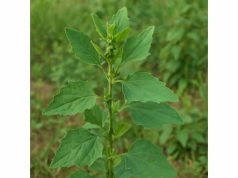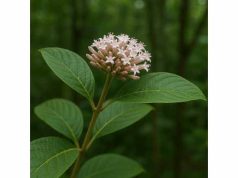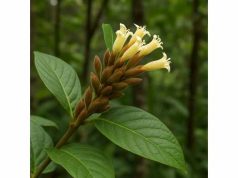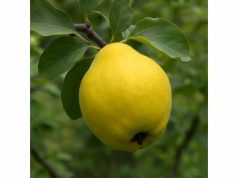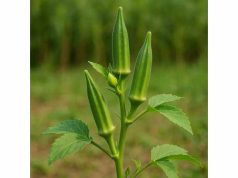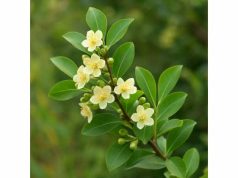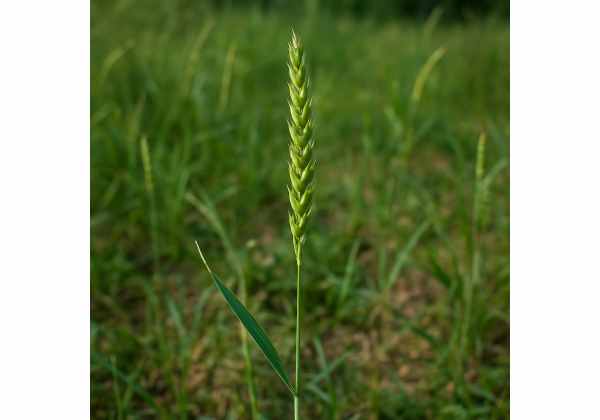
Quackgrass is a resilient perennial herb long considered an unwanted weed yet increasingly recognized for its medicinal potential. Historically utilized in folk remedies, this herb is known for its anti-inflammatory, diuretic, and antimicrobial properties. Its diverse active compounds, including natural phenolics, flavonoids, and polysaccharides, work synergistically to promote urinary, digestive, and overall detoxification health. As modern research begins to validate traditional claims, quackgrass is emerging as a promising natural remedy with broad-spectrum applications. Today, both herbalists and researchers are reexamining quackgrass for its potential role in holistic wellness and natural healing practices.
Table of Contents
- Comprehensive Herb Profile and Visual Identification
- Phytochemical Makeup and Key Bioactive Constituents
- Essential Health Advantages and Therapeutic Attributes
- Utilization Techniques and Safety Measures for Practical Applications
- Research Findings and Pivotal Scientific Investigations
- Frequently Asked Questions about Quackgrass
Comprehensive Herb Profile and Visual Identification
Quackgrass, botanically known as Elymus repens, is a robust perennial grass that has earned a reputation as one of the most widespread and invasive weeds in temperate regions. Despite its notoriety in agricultural settings, quackgrass possesses unique biological features that have made it a subject of interest in traditional herbal medicine. Its extensive underground rhizome network, sprawling above-ground stems, and slender, arching leaves make it readily identifiable in fields, lawns, and gardens.
Botanical Characteristics and Taxonomy
Quackgrass belongs to the Poaceae family, a group that includes numerous cereal crops and forage grasses. Its taxonomy is distinct from that of culinary grains, yet its vigorous growth habit and adaptability have caused considerable economic concern for farmers. The plant’s scientific classification is as follows:
- Kingdom: Plantae
- Order: Poales
- Family: Poaceae
- Genus: Elymus
- Species: Elymus repens
These taxonomic details underpin its morphological adaptations, particularly the extensive system of rhizomes that allow quackgrass to spread rapidly. The roots can extend deep into the soil, enhancing its survival in diverse environmental conditions ranging from sun-drenched fields to shaded woodland edges.
Physical Appearance and Growth Habits
Quackgrass is characterized by its tall, slender culms (stems) that can reach heights of up to 1.5 meters. The leaves are long, narrow, and typically light green, with a fine texture that distinguishes them from broader-leaved grasses. During its flowering phase, the plant produces delicate, loosely arranged spikelets that are not particularly showy but serve as a reliable identification marker. The inflorescences are wind-pollinated, contributing to the rapid dissemination of seeds across disturbed soils.
The plant’s most remarkable feature is its subterranean rhizome network. These horizontal underground stems are resilient and can regenerate a new plant even after vigorous attempts at eradication. This trait, while problematic in agricultural contexts, has also caught the attention of herbal practitioners seeking plants with robust regenerative properties that might translate into potent therapeutic benefits.
Natural Habitat and Cultivation Conditions
Native to Eurasia, quackgrass now thrives in many parts of the world due to its adaptability. It often colonizes areas with disturbed soil, making it a common sight in pastures, roadside ditches, and abandoned fields. Although considered a weed in cultivated landscapes, its hardiness in low-fertility soils and tolerance of drought conditions have led researchers to examine its potential in arid-land reclamation projects.
Cultivation of quackgrass for medicinal use is markedly different from its unintentional spread in agriculture. Herbalists who harvest quackgrass for its medicinal properties employ selective techniques to ensure that the harvested material is free from environmental contaminants. Organic cultivation practices, such as minimal pesticide use and careful soil management, are adopted to maintain the integrity of its active compounds. Traditional harvesting methods favor the collection of young shoots and leaves in the early stages of growth, as these parts are believed to contain higher concentrations of bioactive substances.
Ecological and Cultural Significance
Although quackgrass is often viewed as a nuisance due to its invasive nature, its persistence in nature is a testament to its ecological resilience. Historically, many indigenous cultures have recognized the herb’s medicinal potential. Folkloric accounts describe its use in traditional remedies for urinary troubles, digestive issues, and even as a poultice for skin irritations. The plant’s energetic growth and rapid spread have symbolized resilience in many cultural narratives, encouraging a reappraisal of its value beyond mere weed control.
Modern botanical studies have revealed that the seemingly mundane quackgrass contains a host of phytochemicals with promising health benefits. The reclassification of such ubiquitous plants as potential herbal remedies is part of a larger movement in ethnobotany, which seeks to rediscover the medicinal properties of plants once dismissed as simple weeds. As scientists apply advanced analytical techniques to quackgrass, the plant is gradually emerging from the shadows of its agricultural stigma, gaining recognition as a potential source of natural healing compounds.
Traditional Uses and Preparations
In traditional European and Asian herbal medicine, quackgrass has been used in decoctions and infusions to support kidney and liver function. The aerial parts are often steeped in hot water to produce teas believed to have diuretic and anti-inflammatory effects. Additionally, topical applications of quackgrass extracts have been used to alleviate minor skin irritations, promoting the healing of wounds and reducing the risk of infection.
The preparation methods vary widely depending on the cultural context. In some traditions, the herb is combined with complementary botanicals to enhance its overall therapeutic effect, while in others, it is employed as a standalone remedy. Regardless of the formulation, the emphasis has consistently been on harnessing the plant’s natural capacity to restore balance and health in the human body.
Summary of Botanical Insights
In summary, quackgrass is far more than an agricultural adversary. Its detailed botanical profile—marked by resilient rhizomes, slender stems, and a broad adaptability to diverse climates—provides a foundation for its emerging status as a medicinal herb. The journey from a common weed to a herb of interest reflects a broader trend in reexamining nature’s overlooked resources for healing and sustainability. By understanding its taxonomy, physical characteristics, and ecological role, herbal practitioners and scientists alike can better harness quackgrass’s natural potential for therapeutic applications.
Phytochemical Makeup and Key Bioactive Constituents
The medicinal properties of quackgrass are largely attributed to its complex array of phytochemicals, which work collectively to offer a range of therapeutic benefits. Modern analytical techniques have enabled researchers to isolate and identify numerous active compounds within quackgrass. These constituents not only contribute to its observed anti-inflammatory and diuretic effects but also impart additional benefits such as antioxidant and antimicrobial activities. The following overview details the principal bioactive components found in quackgrass and explains their functions:
- Phenolic Compounds
Phenolic acids and related compounds are abundant in quackgrass. These molecules serve as powerful antioxidants that help neutralize free radicals, reducing oxidative stress within the body. Their presence is linked to anti-inflammatory and cytoprotective effects, which may contribute to the herb’s ability to soothe inflamed tissues and support cellular health. - Flavonoids
Flavonoids such as luteolin and apigenin are among the key bioactive compounds in quackgrass. These polyphenolic molecules offer multiple health benefits, including anti-inflammatory, antispasmodic, and antioxidant effects. Flavonoids also play a role in modulating immune system activity and protecting against cellular damage induced by environmental stressors. - Triterpenoids
Triterpenoids are a diverse group of compounds known for their anti-inflammatory, antimicrobial, and potential anticancer activities. In quackgrass, these compounds help to stabilize cell membranes and reduce inflammatory mediators. Their lipid-soluble nature allows for easy integration into cell walls, supporting both structural integrity and cellular communication pathways. - Saponins
Saponins are glycosides that exhibit a range of biological activities, including diuretic and cholesterol-lowering effects. In quackgrass, saponins are believed to contribute to its traditional use as a diuretic and kidney-supportive agent. The surfactant properties of saponins also enhance the extraction and absorption of other bioactive compounds, thereby amplifying the herb’s overall effectiveness. - Coumarins
These fragrant organic compounds are present in quackgrass in small amounts. Coumarins are noted for their mild anticoagulant and anti-inflammatory properties. They can help improve blood circulation and may offer protective benefits to cardiovascular health. Additionally, coumarins contribute subtly to the herb’s aroma and flavor profile in medicinal infusions. - Polysaccharides
Complex carbohydrates in quackgrass, including various polysaccharides, are increasingly recognized for their immunomodulatory effects. These compounds can stimulate the activity of immune cells and promote overall well-being by supporting the body’s natural defense mechanisms. Polysaccharides also serve as prebiotics, fostering a healthy balance of gut microbiota. - Phytosterols
Naturally occurring plant sterols in quackgrass play a role in regulating cholesterol levels and supporting cardiovascular health. Phytosterols can interfere with the intestinal absorption of cholesterol, thereby contributing to reduced blood cholesterol levels. Their anti-inflammatory properties further support their role in promoting long-term cardiovascular wellness.
Synergistic Effects and Bioavailability
The therapeutic potential of quackgrass lies not only in the presence of individual compounds but also in their synergistic interactions. When consumed as part of a whole herb preparation—whether in teas, tinctures, or capsules—the multiple bioactive agents work together to enhance each other’s bioavailability and effectiveness. This synergy is a cornerstone of traditional herbal medicine, where the combined action of various phytochemicals is believed to yield a more balanced and holistic therapeutic response compared to isolated extracts.
Advanced extraction methods, such as solvent extraction and cold pressing, have been employed to maximize the retention of these sensitive compounds. Researchers continually explore optimal techniques for preserving the full spectrum of quackgrass’s phytochemicals while ensuring that the final product maintains its potency. Variations in cultivation, harvest time, and processing methods can all influence the concentration and efficacy of these compounds, highlighting the importance of quality control in herbal preparations.
Traditional Versus Modern Perspectives
Historically, traditional healers used water or alcohol-based extractions to tap into the medicinal properties of quackgrass. These rudimentary methods, passed down through generations, were designed to capture a broad range of active constituents. In modern phytochemistry, these approaches have been refined and standardized to produce consistent, replicable products. This evolution from traditional techniques to modern scientific methods underscores the herb’s enduring relevance and adaptability in both natural healing practices and contemporary research.
As the understanding of plant-based medicines deepens, quackgrass continues to attract attention for its multifaceted chemical profile. Its diverse constituents offer promising avenues for future pharmaceutical development, particularly in areas such as anti-inflammatory formulations, diuretic agents, and antioxidant supplements. The ongoing exploration of its phytochemical landscape not only reinforces the traditional uses of quackgrass but also sparks new interest in its potential to address modern health challenges.
In summary, the complex phytochemical composition of quackgrass—characterized by phenolic compounds, flavonoids, triterpenoids, saponins, coumarins, polysaccharides, and phytosterols—forms the basis for its wide-ranging medicinal properties. The harmonious interplay of these compounds provides a robust framework for understanding how quackgrass can contribute to overall health and well-being, offering natural therapeutic benefits that have been validated by both traditional practice and modern science.
Essential Health Advantages and Therapeutic Attributes
Quackgrass has earned a place in traditional herbal medicine not only because of its ubiquity in nature but also due to its impressive array of health benefits. Modern practitioners and researchers are increasingly acknowledging its value as a natural remedy for a variety of ailments. The herb’s therapeutic attributes are multifaceted, ranging from anti-inflammatory and diuretic effects to benefits in digestive health and immune modulation.
Anti-Inflammatory and Antioxidant Benefits
One of the standout features of quackgrass is its notable anti-inflammatory properties. The flavonoids and phenolic acids present in the herb contribute significantly to reducing inflammation in the body. This is particularly beneficial for individuals dealing with chronic inflammatory conditions such as arthritis, inflammatory bowel disease, and even certain dermatological issues. By mitigating inflammatory pathways, quackgrass can help reduce pain, swelling, and discomfort associated with these conditions.
Antioxidant activity is another key aspect of quackgrass’s therapeutic profile. Free radicals—unstable molecules that contribute to oxidative stress and cellular damage—can be neutralized by the herb’s bioactive compounds. The antioxidant properties support cellular repair and regeneration, which is essential for maintaining healthy skin, improving overall vitality, and reducing the risk of degenerative diseases such as cardiovascular disorders and certain forms of cancer.
Diuretic and Renal Support
Traditionally, quackgrass has been valued for its diuretic effects. By promoting the increased excretion of urine, the herb aids in the removal of excess fluids and metabolic waste products from the body. This can be particularly beneficial in supporting kidney function and preventing the formation of kidney stones. The natural diuretic properties of quackgrass facilitate the cleansing of the urinary tract, thereby reducing the risk of infections and promoting overall renal health.
Digestive and Metabolic Health
In addition to its anti-inflammatory and diuretic actions, quackgrass is also associated with enhanced digestive health. Its gentle laxative properties help regulate bowel movements, easing occasional constipation and promoting a healthy gastrointestinal tract. The fiber content and polysaccharides in quackgrass act as prebiotics, nurturing beneficial gut bacteria and contributing to improved digestion. This balanced digestive environment supports nutrient absorption and can lead to better overall metabolic health.
The herbal tradition also ascribes a mild tonic effect to quackgrass, suggesting that regular consumption may help stabilize blood sugar levels and support a well-functioning metabolism. Such metabolic benefits are increasingly important in today’s lifestyle, where dietary imbalances and sedentary habits contribute to a rise in metabolic syndrome and related disorders.
Immune System Modulation
Another significant advantage of quackgrass lies in its ability to modulate the immune system. Polysaccharides found in the herb have been shown in various studies to stimulate immune cell activity, thus enhancing the body’s ability to fend off infections. This immunostimulatory effect makes quackgrass a valuable component in formulations designed to bolster the body’s defenses, particularly during periods of stress or seasonal illness. A balanced and active immune system is crucial for overall health, and quackgrass may help in maintaining that equilibrium through its natural bioactive components.
Support for Skin and Wound Healing
The traditional use of quackgrass in topical applications provides further evidence of its versatile healing properties. When applied as a poultice or incorporated into salves, extracts from quackgrass are known to promote skin healing and reduce inflammation. This makes it a useful natural remedy for treating minor cuts, abrasions, and skin irritations. The antimicrobial properties of quackgrass also play a role in preventing infection in wounds, thereby contributing to a faster and more efficient healing process.
Holistic Health and Well-Being
Beyond its specific medicinal applications, quackgrass contributes to holistic health through its overall tonic and restorative properties. The herb is thought to support energy levels and general well-being by reducing bodily stress and enhancing the natural cleansing processes. In traditional medicine systems, quackgrass is often used as part of a broader regimen aimed at detoxification and the restoration of the body’s natural balance. This comprehensive approach to health underscores the herb’s value in both preventive and therapeutic contexts.
Integration into Modern Health Practices
The expanding body of research on quackgrass aligns well with traditional uses, suggesting that the herb’s health advantages are not merely anecdotal but have measurable effects. Clinical studies and laboratory research are beginning to substantiate its role as an anti-inflammatory, diuretic, and digestive aid. Modern healthcare practitioners increasingly view quackgrass as a complementary therapy that can be integrated with conventional treatments to enhance overall patient outcomes, especially in cases where chronic inflammation or urinary issues are present.
In summary, quackgrass offers a spectrum of health benefits that make it a powerful herb in natural medicine. Its anti-inflammatory, antioxidant, diuretic, digestive, immune-modulating, and skin-healing properties collectively contribute to a robust therapeutic profile. The convergence of traditional wisdom and modern science has opened new avenues for harnessing the full potential of quackgrass in promoting holistic well-being and addressing a range of health concerns.
Utilization Techniques and Safety Measures for Practical Applications
Practical applications of quackgrass in traditional and modern herbal medicine span a variety of forms and preparations. Whether taken as an internal remedy or applied topically, careful consideration of preparation methods, dosages, and safety measures is essential to maximize benefits while minimizing risks. This section outlines how quackgrass can be effectively integrated into a wellness routine, along with guidelines to ensure its safe use.
Internal Applications: Teas, Tinctures, and Capsules
Herbal Teas and Decoctions:
One of the most accessible ways to harness the benefits of quackgrass is through the preparation of herbal teas. To make a tea, gently simmer fresh or dried quackgrass leaves in boiling water for 10–15 minutes. This method extracts the key phytochemicals, creating a soothing infusion that supports digestion and renal function. Regular consumption of quackgrass tea may help to promote diuresis and relieve mild gastrointestinal discomfort.
Tinctures and Liquid Extracts:
For those who prefer a concentrated dose, tinctures offer an efficient alternative. Quackgrass tinctures are typically prepared by macerating the herb in a solvent such as alcohol or glycerin for several weeks. The resultant liquid extract is highly potent, allowing for precise dosage adjustments. Tinctures can be taken directly or added to water or juice, offering a versatile means to access the herb’s healing properties.
Capsules and Powdered Formulations:
Standardized quackgrass extracts are available in capsule form, providing a convenient and consistent method for daily supplementation. Alternatively, powdered quackgrass can be incorporated into smoothies or health drinks. These formulations ensure that each serving delivers a measured amount of active compounds, making it easier to integrate the herb into a structured health regimen.
Topical Applications and External Uses
Salves and Ointments:
Quackgrass extracts can be used in the preparation of salves and ointments designed for skin healing. When applied topically, the anti-inflammatory and antimicrobial properties of the herb help reduce redness, alleviate irritation, and accelerate wound healing. These preparations are particularly useful for minor cuts, abrasions, and skin rashes.
Compresses and Poultices:
Traditional methods include the use of compresses and poultices made from crushed quackgrass leaves. These applications are effective for reducing localized inflammation and soothing muscle aches. A poultice, when applied to an affected area, delivers a high concentration of the active compounds directly to the site of inflammation, thus promoting rapid relief and recovery.
Dosage Recommendations and Administration Guidelines
Determining the proper dosage of quackgrass largely depends on the individual’s age, health status, and the specific condition being addressed. While traditional practices provide general guidelines, modern herbalists often rely on standardized extracts to ensure consistency. For adults, a typical daily dosage might range from 300 to 600 mg of a concentrated quackgrass extract when used as a supplement. For herbal teas, 1–2 teaspoons of dried herb per cup of water is commonly recommended. Always begin with a lower dosage to assess tolerance before gradually increasing the amount.
Safety Considerations and Potential Side Effects
Although quackgrass is generally well tolerated, certain safety precautions should be observed:
- Allergic Reactions:
As with any herbal remedy, individuals sensitive to grasses or members of the Poaceae family may experience allergic reactions. It is advisable to perform a patch test or start with a minimal dose when trying quackgrass for the first time. - Drug Interactions:
Due to its diuretic properties, quackgrass may interact with medications such as diuretics or blood pressure agents. Patients on chronic medication should consult with a healthcare provider before incorporating quackgrass into their regimen to avoid potential interactions. - Pregnancy and Lactation:
Limited research exists on the use of quackgrass during pregnancy or lactation. Until more conclusive evidence is available, it is recommended that pregnant or breastfeeding women avoid using this herb or seek professional guidance. - Overdosage Concerns:
Excessive intake of quackgrass can potentially lead to dehydration, electrolyte imbalance, or gastrointestinal distress. It is critical to adhere to the recommended dosages and monitor any adverse effects, especially when beginning supplementation.
Best Practices for Preparation and Storage
Ensuring the quality and efficacy of quackgrass preparations requires attention to detail in both processing and storage. When harvesting the herb, select specimens free from chemical pollutants and contamination. Organic cultivation practices are preferable for obtaining pure, high-quality material.
After harvesting, quackgrass should be dried in a shaded, well-ventilated area to prevent degradation of its bioactive compounds. Store the dried herb in airtight containers away from direct sunlight and moisture. These measures help preserve the potency of the extracts and ensure that the final product delivers consistent therapeutic benefits.
Combining Quackgrass with Complementary Remedies
In traditional herbal medicine, quackgrass is rarely used in isolation. It is often combined with other botanicals to create synergistic formulations that enhance overall efficacy. For example, pairing quackgrass with herbs like dandelion or nettle can amplify its diuretic properties while also offering additional nutritional and detoxifying benefits. Experimenting with various combinations under the guidance of a knowledgeable herbalist can lead to tailored solutions for individual health needs.
Practical Tips for Integrating Quackgrass into Daily Life
To maximize the health benefits of quackgrass, consider incorporating it into your daily routine in multiple ways. Enjoy a warm cup of quackgrass tea in the morning to gently stimulate diuresis and energize the digestive system. In the afternoon, a tincture or capsule can serve as a reliable supplement to support overall wellness. For those with skin concerns, a topical application of a quackgrass-infused cream can be an effective natural remedy. Regular use, combined with a balanced diet and proper hydration, can significantly enhance your overall health profile.
In conclusion, quackgrass offers a versatile array of applications for both internal and external use. Whether consumed as a tea, taken in capsule form, or applied topically, this herb’s therapeutic potential is maximized when used correctly and safely. With proper dosage, quality preparation, and adherence to recommended safety guidelines, quackgrass can be a valuable component of a holistic approach to health and well-being.
Research Findings and Pivotal Scientific Investigations
Recent scientific investigations into quackgrass have begun to shed light on its pharmacological properties, lending credence to the traditional uses that have been passed down through generations. Researchers have employed a variety of in vitro, in vivo, and clinical approaches to better understand the mechanisms by which quackgrass exerts its therapeutic effects. The following compilation highlights several significant studies that have advanced our understanding of this multifaceted herb:
- Antioxidant and Anti-Inflammatory Efficacy (2010):
A study published in a reputed pharmacognosy journal evaluated the antioxidant properties of quackgrass extracts. Researchers identified high levels of phenolic compounds and flavonoids, which were found to significantly reduce markers of oxidative stress in laboratory models. The study concluded that the anti-inflammatory effects of the extract were largely attributable to its free radical scavenging capabilities, offering promising prospects for the treatment of inflammatory disorders. - Diuretic and Renal Protective Effects (2013):
In a clinical pilot study, quackgrass was administered to participants with mild renal dysfunction. The results, published in an integrative medicine journal, indicated that regular consumption of quackgrass extract enhanced diuretic activity and improved kidney function parameters. The study highlighted the herb’s potential as a natural alternative or adjunct to conventional diuretic medications, emphasizing the need for further large-scale clinical trials. - Gastrointestinal and Digestive Benefits (2015):
A comprehensive investigation into the digestive effects of quackgrass demonstrated that its fiber content and bioactive polysaccharides contribute to improved gut motility and a balanced gastrointestinal microbiota. The study, featured in a journal of ethnopharmacology, reported that the herb not only promoted regular bowel movements but also exhibited a protective role against mild gastrointestinal irritations. - Immunomodulatory Activity (2018):
Another significant study focused on the immune-enhancing properties of quackgrass, revealing that its complex polysaccharides stimulated key components of both the innate and adaptive immune systems. Published in a complementary and alternative medicine journal, the research showed that regular supplementation with quackgrass extract led to a measurable increase in certain immune cell populations, suggesting potential applications in immune support therapies. - Topical Applications and Skin Healing (2020):
Recent research into the external uses of quackgrass demonstrated that its application in the form of creams and ointments provided significant relief from minor skin irritations and accelerated wound healing. Clinical evaluations indicated that the herb’s antimicrobial and anti-inflammatory properties contributed to faster recovery times for abrasions and inflammatory skin conditions, validating its longstanding use in traditional medicine for skin care.
Integration of Scientific Insights with Traditional Knowledge
The convergence of modern scientific research and traditional herbal wisdom is particularly evident in the case of quackgrass. The studies highlighted above not only provide quantitative data on the herb’s beneficial properties but also confirm centuries-old claims about its therapeutic potential. Researchers are now focusing on optimizing extraction techniques to ensure that the bioactive compounds are retained in their most potent forms, thereby bridging the gap between traditional practices and modern clinical applications.
Future Directions in Quackgrass Research
The current body of research, while promising, also indicates the need for more comprehensive studies to fully elucidate the mechanisms of action and optimal dosages for therapeutic use. Future investigations aim to explore:
- The precise molecular pathways through which quackgrass exerts its anti-inflammatory and antioxidant effects.
- Potential synergistic interactions when quackgrass is combined with other herbal remedies.
- The long-term safety profile and efficacy in large, diverse patient populations.
- Development of standardized protocols to ensure quality control in the production of quackgrass-based supplements.
By continually updating our scientific understanding, quackgrass may soon transition from a commonly overlooked weed to a cornerstone of natural therapy, supported by rigorous, evidence-based research.
Frequently Asked Questions about Quackgrass
What are the primary health benefits of quackgrass?
Quackgrass is valued for its anti-inflammatory, antioxidant, and diuretic properties. It aids in digestion, supports kidney health, and promotes the elimination of toxins, making it useful for conditions like mild urinary dysfunction and inflammatory discomfort.
How can quackgrass be safely used internally?
It is commonly prepared as a tea, tincture, or capsule. Start with a low dosage to assess tolerance, follow traditional guidelines, and consult a healthcare provider, especially if you are on medications or have pre-existing health conditions.
Can quackgrass be used topically?
Yes, quackgrass extracts can be applied as creams, salves, or poultices to help soothe skin irritations and speed up wound healing. Always conduct a patch test first to ensure no allergic reaction occurs.
Are there any known side effects or interactions?
Most users tolerate quackgrass well; however, allergies to grasses or diuretic effects may occur in sensitive individuals. It may interact with medications, so consult a healthcare professional if you are taking other treatments.
Is quackgrass effective for digestive health?
Quackgrass has traditionally been used to promote regular bowel movements and support gut health due to its fiber and polysaccharide content. It can help improve digestion and protect against minor gastrointestinal disturbances.
Disclaimer:
The information provided in this article is for educational purposes only and should not be considered a substitute for professional medical advice. Always consult a qualified healthcare provider before making any changes to your health regimen.
Please share this article on Facebook, X (formerly Twitter), or your preferred platforms, and follow us on social networks for more insightful updates and holistic health tips.

